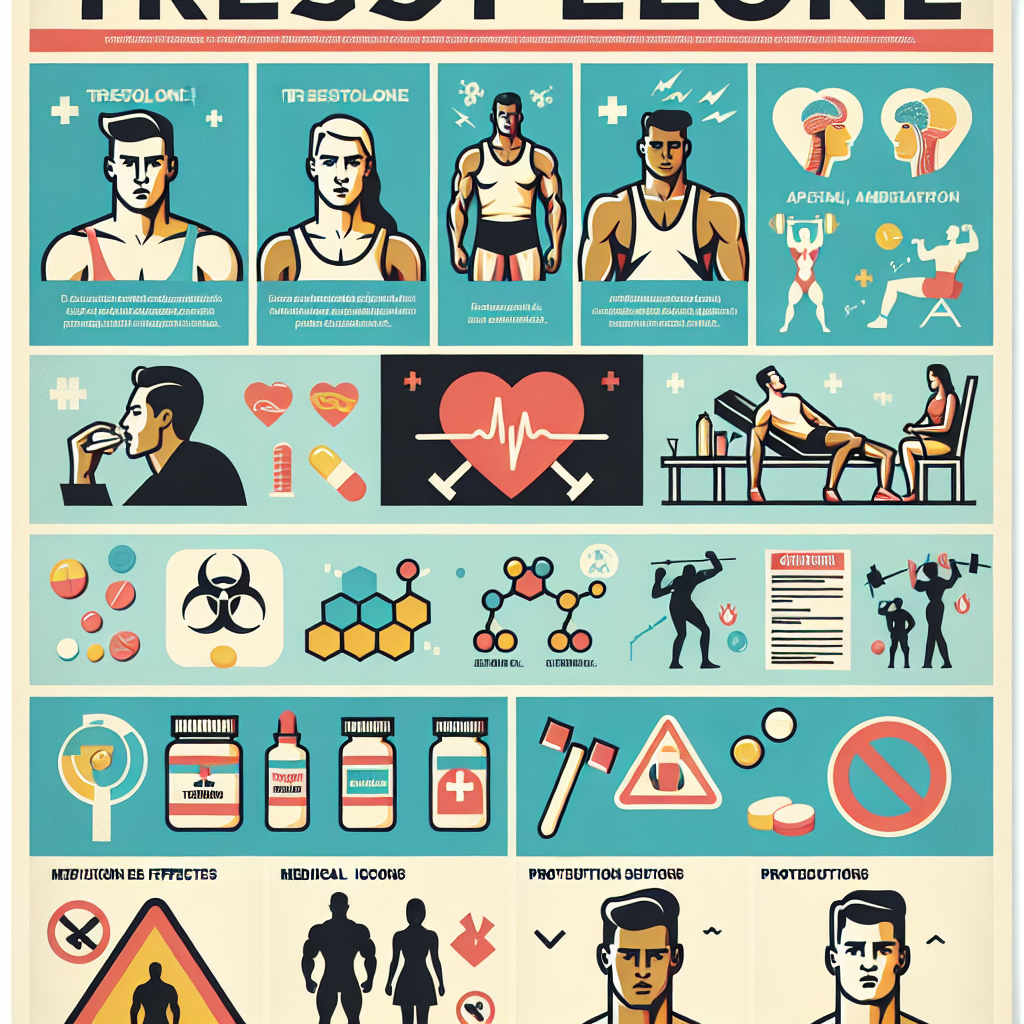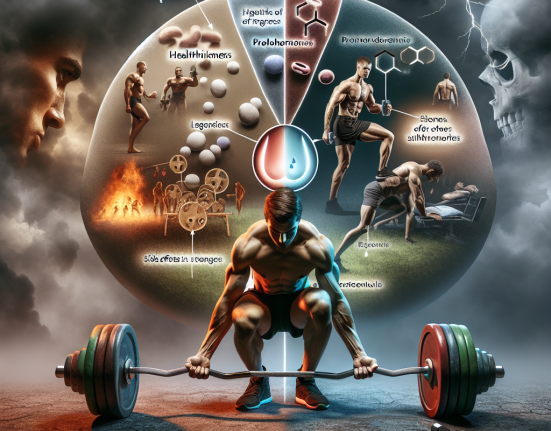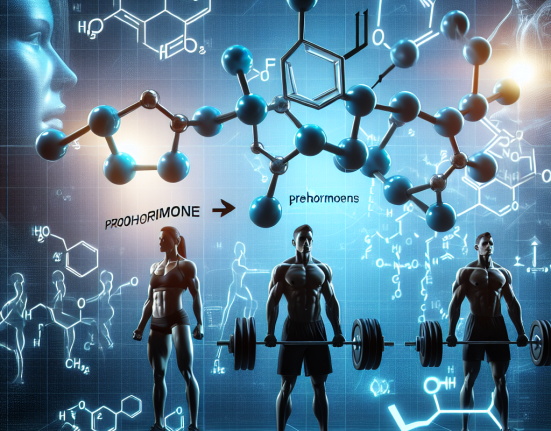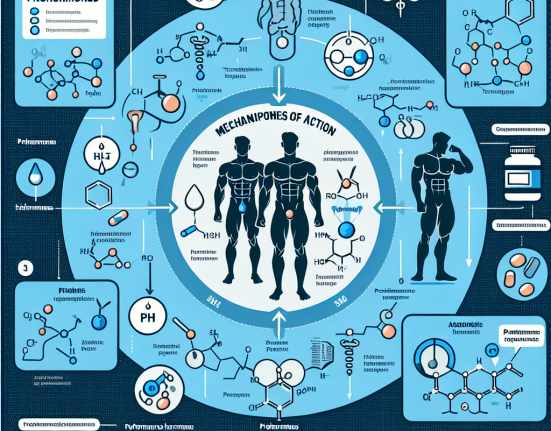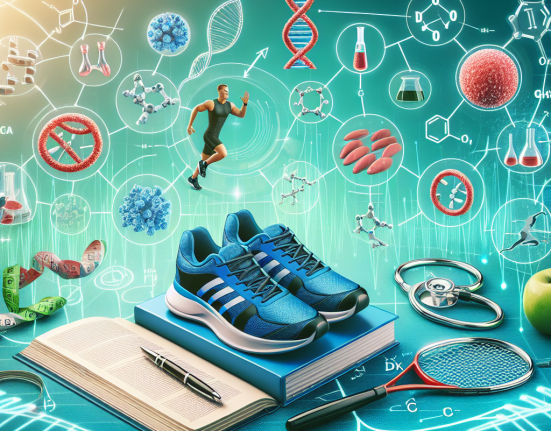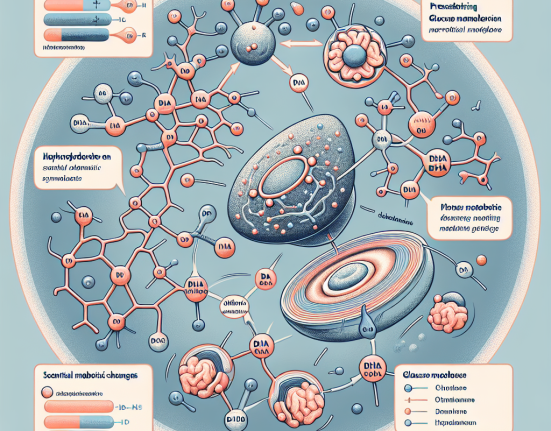-
Table of Contents
Trestolone: Side Effects and Precautions for Athletes
Trestolone, also known as MENT (7α-methyl-19-nortestosterone), is a synthetic androgen and anabolic steroid that has gained popularity among athletes and bodybuilders for its potential to increase muscle mass and strength. However, like any other performance-enhancing drug, trestolone comes with its own set of side effects and precautions that athletes should be aware of before using it. In this article, we will discuss the potential side effects of trestolone and the precautions that athletes should take when using it.
Pharmacokinetics and Pharmacodynamics of Trestolone
Before diving into the side effects and precautions, it is important to understand the pharmacokinetics and pharmacodynamics of trestolone. Trestolone is a derivative of nandrolone and has a similar structure to testosterone. It is a potent androgen with an anabolic to androgenic ratio of 2300:650, making it significantly more anabolic than testosterone (Kicman, 2008). Trestolone is available in both oral and injectable forms, with the injectable form being the most commonly used by athletes.
Once trestolone is injected, it is rapidly absorbed into the bloodstream and reaches peak levels within 24 hours. It has a half-life of approximately 2-3 days, which means that it stays in the body for a longer period of time compared to other steroids (Kicman, 2008). Trestolone is metabolized in the liver and excreted through the urine.
The pharmacodynamics of trestolone involve binding to androgen receptors in various tissues, including muscle, bone, and the central nervous system. This leads to an increase in protein synthesis and nitrogen retention, resulting in muscle growth and strength gains (Kicman, 2008). Trestolone also has anti-catabolic effects, which means it can prevent muscle breakdown during intense training or calorie-restricted diets.
Side Effects of Trestolone
While trestolone may offer significant benefits for athletes, it also comes with a range of potential side effects that should not be ignored. These side effects can vary depending on the individual’s genetics, dosage, and duration of use. Some of the common side effects of trestolone include:
- Increased risk of cardiovascular disease: Trestolone can increase blood pressure and cholesterol levels, which can put athletes at a higher risk of developing cardiovascular disease (Kicman, 2008).
- Suppression of natural testosterone production: As with any steroid, trestolone can suppress the body’s natural production of testosterone. This can lead to a range of side effects, including decreased libido, erectile dysfunction, and mood changes (Kicman, 2008).
- Androgenic side effects: Trestolone has a high androgenic activity, which can lead to side effects such as acne, hair loss, and increased body hair growth (Kicman, 2008).
- Liver toxicity: Trestolone is metabolized in the liver, and prolonged use or high doses can lead to liver damage (Kicman, 2008).
- Virilization in women: Female athletes who use trestolone may experience virilization, which includes symptoms such as deepening of the voice, increased body hair growth, and clitoral enlargement (Kicman, 2008).
It is important to note that the above side effects are not exhaustive, and there may be other potential side effects associated with trestolone use. It is crucial for athletes to carefully consider these potential risks before using trestolone and to monitor their health closely while using it.
Precautions for Athletes Using Trestolone
As with any performance-enhancing drug, there are precautions that athletes should take when using trestolone to minimize the risk of side effects and ensure their safety. These precautions include:
- Consulting with a healthcare professional: Before using trestolone, athletes should consult with a healthcare professional to discuss their medical history and any potential risks associated with using the drug.
- Using the lowest effective dose: Trestolone is a potent steroid, and using high doses can increase the risk of side effects. Athletes should start with the lowest effective dose and gradually increase it if necessary.
- Limiting the duration of use: Prolonged use of trestolone can increase the risk of side effects. Athletes should limit their use to no more than 8-12 weeks and take breaks in between cycles.
- Monitoring blood pressure and cholesterol levels: As trestolone can increase blood pressure and cholesterol levels, athletes should regularly monitor these parameters and take necessary steps to keep them in a healthy range.
- Using liver support supplements: To minimize the risk of liver toxicity, athletes can use liver support supplements while using trestolone.
- Being aware of potential interactions: Trestolone may interact with other medications or supplements, so athletes should be aware of any potential interactions and consult with a healthcare professional if necessary.
Real-World Examples
Trestolone has gained popularity among athletes and bodybuilders, and there have been several real-world examples of its use in the sports world. In 2018, a professional bodybuilder was banned for four years after testing positive for trestolone (USADA, 2018). In another case, a high school football player was suspended for using trestolone to enhance his performance (Katz, 2019). These examples highlight the prevalence of trestolone use in the sports world and the potential consequences for athletes who use it without proper precautions.
Expert Opinion
According to Dr. Harrison Pope, a leading expert in the field of sports pharmacology, “Trestolone is a potent androgen with significant anabolic effects, but it also comes with a range of potential side effects that athletes should be aware of. It is crucial for athletes to take necessary precautions and monitor their health closely while using trestolone to minimize the risk of adverse effects.”
References
Katz, M. (2019). High school football player suspended for using trestolone. Retrieved from https://www.menshealth.com/fitness/a26006310/high-school-football-player-suspended-trestolone/
Kicman, A. T. (2008). Pharmacology of anabolic steroids. British Journal of Pharmacology, 154(3), 502-521. doi: 10.1038/bjp.2008.
